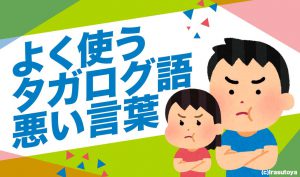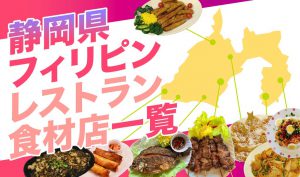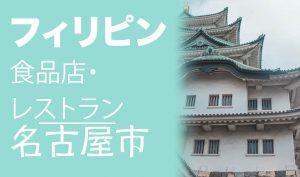(EN) Moped (Gentsuki) License English Exam Practice Test 2
(EN) Moped (Gentsuki) License English Exam Practice Test 2 (原付免許)
A practice exam for Two-wheeled Motorcycle (Moped) students. Passing score is 45 out of 50 items. Good luck on taking the actual exam and continue to review~
If there is a stop sign, stop just before the stop line to make sure it is safe before passing.
If there is a stop sign, be sure to stop just before the stop line (or just before the intersection if there is none).
If a streetcar is stopped at a stop without a safety zone and there are no passengers on or off the streetcar, you may pass slowly if the distance between your car and the streetcar is 1.5 meters.
Passage is allowed if the conditions of the question are met.
The traffic light signal was green, but a police officer was standing in the middle of the intersection and he raised both of his arms horizontally to the side, so you stopped just before the stop line.
When confronted with a hand signal in which a police officer or a traffic enforcer is raising their arms horizontally on the side, it is necessary to stop because it has the same meaning as a red signal.
Motorized bicycles may pass on bicycle paths when traffic volume is light.
Motorized bicycles are not allowed on bicycle paths, even if traffic is light.
When signaling a right or left turn on a motorized bicycle, only direction indicators are required; hand signals shall not be used.
For small vehicles such as motorized bicycles, it is better to use hand signals as well.
There is no problem in stopping near the top of an uphill to unload things.
Parking is prohibited near the top of the uphill, so stopping for loading/unloading luggage is prohibited.
The correct way to apply the brakes on a motorcycle is to apply the brakes on the front and rear wheels at the same time while using the engine brake.
When braking, apply the brakes to both front and rear wheels at the same time while releasing the accelerator pedal and applying the engine brake.
If you enter an intersection while on a green light and you stop to prepare to make a right turn, if the traffic light changes from yellow to red, you must stop immediately.
Since you had already entered the intersection and prepared to make a right turn, you can turn right even if the light turns red since it will be dangerous to stop in the middle of the intersection.
If you are driving on the back of a stopped bus, you must wait behind until the bus starts moving.
You can pass the bus after confirming safety, except when the bus is signaling to move.
If you are overtaking a streetcar on a road with a central track, you must stay on the left side of the streetcar.
When passing a streetcar passing near the center of the road, you must pass on its left side.
When you were about to pass the railroad crossing, the level crossing began to descend, but since you could not see the train yet, so you hurried to pass through.
Never enter a railroad crossing when the level crossing has started to descend.
On one-way streets, it is possible to pass over the center of the road to the right side.
Left-hand traffic rules do not apply on one-way streets.
Sudden starts and sudden braking are not only dangerous, but also causes traffic pollution.
Continued sudden acceleration or braking can cause traffic pollution
If you have no choice but to park on the road and evacuate due to a disaster, do not park in a place that hinders the passage of people to evacuate or the implementation of emergency earthquake disaster prevention measures.
Do not park in a place that will interfere with the passage of people to evacuate or prevent emergency measures against earthquake disasters.
When going through a curve with a motorized bicycle, it is advisable to tilt the body so that you can turn naturally.
When turning on a curve, instead of turning the steering wheel, tilt the vehicle body so that you can turn naturally.
Motorized bicycles shall proceed at a slower speed when the distance from pedestrians is not safe.
When passing by pedestrians, you must always leave a safe space between them or slow down.
As long as you signal the car to start, there is no need to check the safety of the front, rear, left, and right.
It is necessary to signal the transmission with a direction indicator, etc., and check the safety of the front, rear, left, and right with the rearview mirror.
If you are involved in a traffic accident, you should take measures such as stopping the bleeding while waiting for an ambulance.
If there is an injured person, provide first aid until an ambulance or other emergency medical service arrives.
On roads without vehicle lanes, you may drive on any part of the road to the left of the center line.
Except when overtaking, it is necessary to drive on the left side of the road.
It is better to use the engine brake if possible instead of using the brakes recklessly on long downhills.
On long descents, be careful not to use the brakes too often, as they may lose their effectiveness.
If a person with a disability is trying to pass in a wheelchair, you must stop or slow down so as not to impede their passage.
If a person with a physical disability is present, you must stop or slow down to allow safe passage.
The limit on the width of a motorized bicycle load is the width of the loading device plus no more than 10 cm on either side.
The limit on the width of a motorized bicycle load is the width of the loading device plus 15 cm or less on either side.
Motorized bicycles are not allowed to carry two passengers even if they are equipped with seats for passengers.
The capacity of a motorized bicycle is one passenger.
Do not overtake the vehicle in front of you if it is veering to the right to make a right turn.
Overtaking is prohibited if the car in front of you is about to change course for a right turn, etc.
At night, on roads with many oncoming vehicles, it is safer to drive with the high beam turned on in order to warn other drivers.
On city streets at night when traffic is heavy, for example, it is better to drive with the front lights switched downward.
Brakes work better when the vehicle's load is heavy than when unloaded.
Heavy loads increase the braking distance and, for the same braking intensity, braking efficiency is reduced.
Even if you follow traffic rules, driving in an unreasonable, self-centered manner not only causes trouble for others, but also endangers yourself.
When you drive selfishly, you put yourself at risk.
If an automatic motorcycle has a continuously variable transmission, it has the characteristic that the engine power is not transferred to the wheels at low engine speeds.
Automatic motorcycles with continuously variable transmission have the characteristic that engine power is not transferred to the wheels when the engine speed is low.
Motorized bicycles are not permitted in the traffic zone marked by this sign.
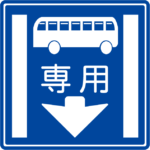
This sign indicates a "dedicated traffic zone for buses". Motorized bicycles, small special motor vehicles, and light vehicles are allowed to pass.
You must slow down when passing near a bend in the road.
The area around the bend in the road is a place to slow down.
At intersections with flashing yellow lights, you must stop and confirm safety before proceeding.
At intersections with flashing yellow lights, pedestrians, cars, and other vehicles can pass if they pay attention to other traffic.
Helmets can be lightweight construction helmets to keep the head dry.
It must be marked with the JIS mark or the PS (C) mark.
No parking or stopping is allowed within 5 meters back and forth from the crosswalk and its edge.
Vehicles cannot be parked or stopped within 5 meters of a crosswalk or its edge. Parking and stopping are prohibited at pedestrian crossings and within 5m of the edge of the crosswalk.
If a child is walking alone, you should pause or slow down to allow the child to pass safely.
Children may become so absorbed in something that catches their interest that they may suddenly run onto the road, so you may need to pause or slow down to allow them to pass safely.
The one-year period after receiving a moped license is called the novice driver period, and anyone who has violated and reached certain standards during this period must take a novice driver course.
Those who have violated and reached certain standards within the novice driver period are obliged to take the novice driver training course.
You cannot park on the right side of a car that is parked parallel to the road, but you can stop.
Do not park or stop alongside cars parked parallel to the road.
Only trucks with loads are allowed in the climbing lane on roads with this sign
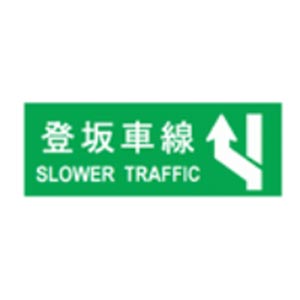
This sign indicates a "climbing lane," but slower vehicles, not trucks, can enter.
Roads with this sign have fewer lanes, so you must stay in the right lane.
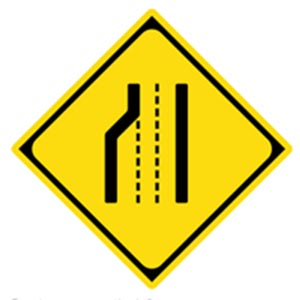
This sign indicates "reduced number of lanes", so vehicles traveling in the left lane must change lanes to the right lane.
You should give a signal 30 meters before you make a turn, but when slowing down or stopping, you can just do so at the exact time.
It is okay to signal when to slow down, stop, or back up.
Driving with a cell phone in your hand is dangerous, so if you must use it, pull over in a safe place before using it.
If you must use your cell phone, be sure to park your car in a safe place before using it.
On rainy days, it is better to keep more distance between vehicles than on sunny days because the road surface is slippery and stopping distances are longer.
Keep a greater distance between vehicles on rainy days than on sunny days.
The legal maximum speed for motorized bicycles is 40 km/h unless otherwise specified by signs or markings.
The legal maximum speed for motorized bicycles is 30 km/hour
If there is an obstacle in front of your path of travel, you must pause or slow down in advance to give way to a vehicle coming from the opposite direction.
If there is an obstacle in front of your path, pause or slow down and yield the right of way to oncoming traffic.
A sudden exit from a dark tunnel to a brightly lit area may cause a sudden temporary loss of vision and blindness.
When the brightness changes suddenly, the visual acuity drops sharply for a while.
The roads marked with this sign are closed to regular vehicles, but open to motorized bicycles.
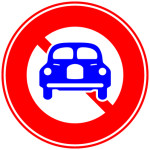
This sign indicates "Closed except for two-wheeled vehicles". Motorcycles and motorized bicycles are allowed to pass.
Even if a right-turning vehicle enters the intersection first, it must not block the progress of straight-ahead vehicles, left-turning vehicles, and streetcars. (excluding roundabouts)
If you are about to turn right and there are cars or streetcars going straight or turning left at the intersection, give priority to those cars even if your car has entered the intersection first.
This marker indicates the end of the no-turn section, so a U-turn can be made.
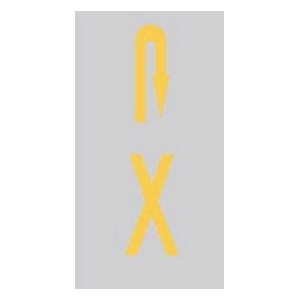
This sign indicates "Do not turn". You cannot make a U-turn.
At this sign, drivers should be careful of vehicles merging from the left side of the road.
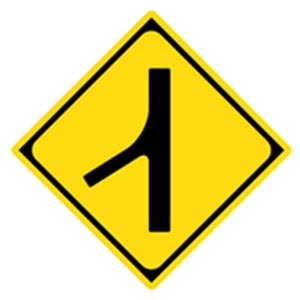
This sign indicates that there is merging traffic, so watch out for merging vehicles from the left.
When a police officer or traffic patrolman is giving a hand signal on a street other than an intersection, the stop position is 10 meters in front of that police officer or other officer.
When a police officer or traffic patrolman is giving a hand signal on a street other than an intersection, the stop position is 1 meter in front of that police officer or other officer.
A pedestrian was crossing a road without a pedestrian crossing at a traffic intersection, but because you had priority on the lane, the pedestrian stopped crossing and you passed him/her.
If pedestrians are crossing at intersections without pedestrian crossings, do not block their passage.
MORE PRACTICE EXAMS
 準備中
準備中



